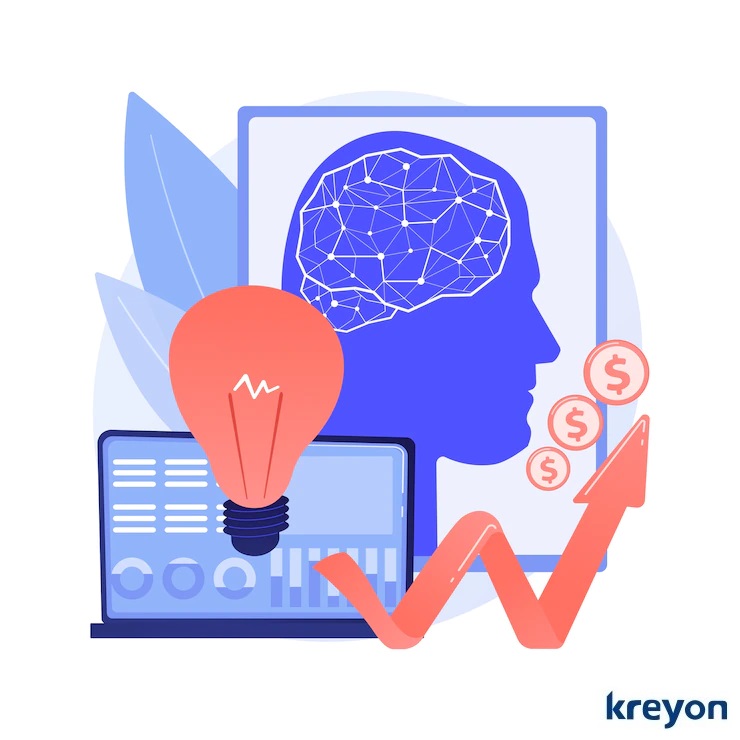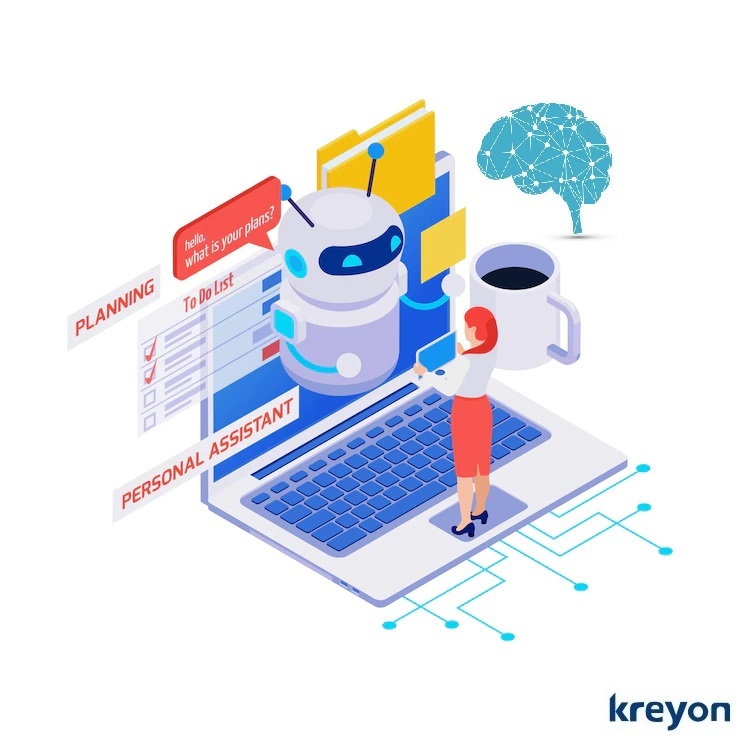7 Effective Ways to Leverage AI to Boost Your Business

AI for business is at work everyday in our lives. The growing volumes of data collected from ever connected internet users is unleashing a wide range of applications to leverage AI to boost companies. Businesses are adopting AI in various processes, gaining superior insights into their data & steering their organisation using the advanced learning from AI.
To leverage AI effectively in making the right decisions, companies are making use of integrated systems. These systems can look at data in different contexts and provide valuable real time insights for e.g. smart inventory systems that can predict customer demand to reduce shipping orders. Here is a look at how companies are leveraging AI to improve their business:
1. Compound Data
Data is the most powerful element in the AI equation. The AI systems and processes are driven on data. When organisations can integrate, interpret and take proactive decisions based on data, it makes a huge difference. AI software improves as it is exposed to organisational data, it can analyse various patterns and correlations in business functions to provide useful insights.
Companies that are deploying integrated systems can use AI software to improve their business processes. For e.g. when customer data is collected, AI algorithms can predict the right themes for product promotions. A young audience will respond well to funky campaigns. The right customer segment, campaign and marketing messages can be built using AI systems.
2. Improved Hiring Decisions

AI can be used to improve hiring by analysing the recruitment data methodically. AI can reduce biases, errors and help in screening the best candidates for companies. As hiring takes greater precedence to attract good talent, AI tools are a good bet on finding the right candidates.
AI algorithms can work on candidate profiles and data. Overtime, the system is trained to figure out the best performers for a given job function and perform a match with available candidate profiles. The pattern matching is crucial as it performs an entry level screening of talent saving time by reducing the no. of interviews.
Some companies are now doing an initial screening of candidates based on video introductions and interviews. The data is analysed for attributes that make good sales professionals and managers. The analysis can help companies reduce their biases and hire the right candidates based of profile scoring AI recommendations.
3. Sales & Purchase Decisions
The sales and purchase decisions are the backbone of a business. The net margins and business continuity is ensured with optimised sales and purchase processes. So, when you’re invoicing a long term client, you can offer them a personalised loyalty discount or some free service options.
The invoices sent by sales persons can have automated suggestions and recommendations pre-approved by the system. An AI based invoice recommendation can calculate customer lifetime value and suggest discounts for clients. The personalised discounts for customers goes a long way in building stronger bonds & even repeat purchases.
On the contrary, the purchase decisions can be driven by AI recommendations too. The AI systems can analyse historical purchase prices and search the web for latest prices. Based on the trends, the AI systems can suggest the optimised time when purchasing can be done. The purchase decisions can be driven according to the AI recommendations. Buying at the lowest prices and optimising capital costs for inventory driven by AI improves the bottom line for organisations.
4. Customer Interactions & Support

Customer support is paramount to retention and long term business opportunities. AI based chatbots can be deployed for dealing with customers. The product led companies are adopting chatbots and helping customers to achieve their desired outcomes smoothly.
The chatbot support tool integrates with products and services, it answers customer FAQs, which are mostly repetitive. It frees up service personnel to do other tasks by taking care of the redundant and repetitive elements of customer interactions.
AI can be used for improving product interactions with the customers. When a product is used by a customer on a trial basis, the user interactions with the product can be tailored using AI based systems. All the user interactions with the product are monitored, they are then suggested options based on their intent and jobs to be completed. These richer the interactions, the greater the chances for conversions and longer the retention for customers.
5. Workforce Integration
Today businesses rely on workforces across locations, remote workers and even work with contractors. The workforce integration requires unifying the effort of the team to deliver on your company’s objectives. AI based systems can integrate alongside the workforce for organisations to achieve the organisational goals.
AI software is used for organising training, recommending promotions for top performers, help with day to day employee tasks etc. The AI systems provide personalised tools and resources to teams for completing their tasks. The conversational chatbots, knowledge graphs or company resources and intelligent automation can drive higher productivity for organisations.
For technology driven companies, some tasks can have an estimated time for completion. For e.g. developing a feature could be sent to the employee with an average time for completion. It can keep track of the productivity and quality of work metrics to drive better performance.
6. Continuous AI

Businesses need to be dynamic and adaptive to deal with the new developments. A static system cannot deal with the complexity of the future demands. But artificial intelligence is based on continuous improvements, it deals with changing scenarios and gathers data to deal with it. The best AI systems improve as they gather more data and are exposed to different business scenarios.
The continuous AI is always getting smarter with data and machine learning to respond with greater accuracy. For e.g. bank data feeds are analysed and classified for accounting reports. The automation ensures that no manual classification is needed, AI analyses and produces the reports based on machine learning algorithms.
Artificial intelligence is an essential tool to uncover business gaps, provide intelligent actionable insights and provide a measurable framework for reaching your business goals.
7. Fraud & Anomaly Detection
AI systems can help companies deal with frauds and anomalies proactively to prevent them. Whether it is the customer payments, suspicious emails, vendor, insurance payments etc. any anomalous behaviour can be detected and alerted by the system.
Companies can guard their interests by adding preventive layers for business systems using technology. The data can be analysed and reported higher up the management chain. Manytimes, organisations have situations where there is overpayment, or under reporting of certain expenses, accounting manipulations etc., all these cases can be handled with a good AI based software.
Machine learning can not only automate existing tasks, it empowers organisations with deployment of models that can detect variances and anomalies in existing systems. The AI system analyses all the data, its origination and any variance from the past to uncover malicious events. These systems create an invisible preventive layer and can be used in various functions like finance & accounting, vendor or customer invoice payments etc.
Kreyon Systems is a cutting-edge AI Software development company for business management solutions. We work with public companies, government organizations & reputed enterprise clients globally. If you need any assistance, please reach out to us.
